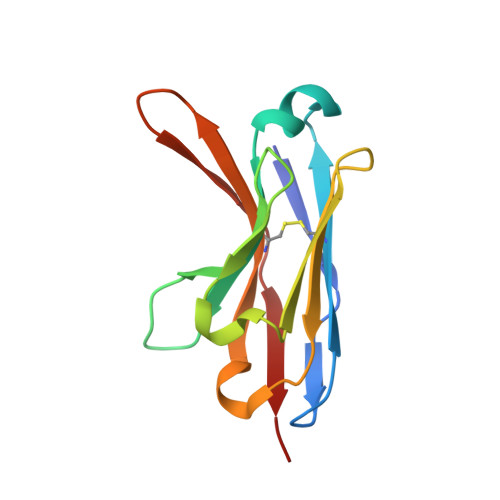The ALFA-tag is a highly versatile tool for nanobody-based bioscience applications.
Gotzke, H., Kilisch, M., Martinez-Carranza, M., Sograte-Idrissi, S., Rajavel, A., Schlichthaerle, T., Engels, N., Jungmann, R., Stenmark, P., Opazo, F., Frey, S.(2019) Nat Commun 10: 4403-4403
- PubMed: 31562305
- DOI: https://doi.org/10.1038/s41467-019-12301-7
- Primary Citation of Related Structures:
6I2G - PubMed Abstract:
Specialized epitope tags are widely used for detecting, manipulating or purifying proteins, but often their versatility is limited. Here, we introduce the ALFA-tag, a rationally designed epitope tag that serves a remarkably broad spectrum of applications in life sciences while outperforming established tags like the HA-, FLAG®- or myc-tag. The ALFA-tag forms a small and stable α-helix that is functional irrespective of its position on the target protein in prokaryotic and eukaryotic hosts. We characterize a nanobody (NbALFA) binding ALFA-tagged proteins from native or fixed specimen with low picomolar affinity. It is ideally suited for super-resolution microscopy, immunoprecipitations and Western blotting, and also allows in vivo detection of proteins. We show the crystal structure of the complex that enabled us to design a nanobody mutant (NbALFA PE ) that permits efficient one-step purifications of native ALFA-tagged proteins, complexes and even entire living cells using peptide elution under physiological conditions.
Organizational Affiliation:
NanoTag Biotechnologies GmbH, Rudolf-Wissell-Straße 28a, 37079, Göttingen, Germany.


















